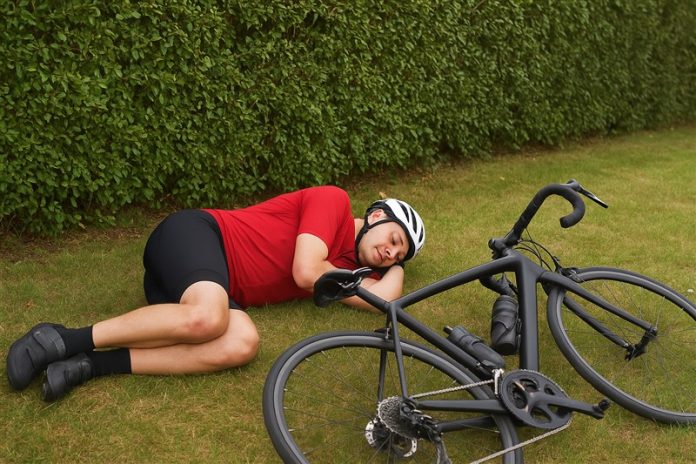Endurance cycling isn’t just about strong legs and stamina. In multi-day events, such as Paris-Brest-Paris, Transcontinental, or Race Across America, sleep strategy often makes the difference between finishing strong and not finishing at all. While training and nutrition dominate most cyclists’ preparation, understanding how to manage sleep is equally important. This article explores how to approach sleep during multi-day cycling events, considering both physiological needs and tactical decisions that can give you an edge.
Why Sleep Strategy Matters in Endurance Cycling
The Role of Sleep in Recovery
Sleep is when your body repairs muscles, restores energy stores, and consolidates memory and decision-making. On long rides, fatigue accumulates quickly. Without adequate rest, reaction times slow, motivation dips, and the risk of accidents rises. Even highly trained athletes cannot maintain peak performance for several days without structured rest.
Cognitive Function and Safety
Ultra-distance cycling demands constant focus: navigating, responding to traffic, eating on the bike, and monitoring fatigue levels. Sleep deprivation reduces alertness and increases the chance of mistakes. Many crashes in multi-day events can be traced back to riders pushing beyond safe limits without rest.
Different Sleep Strategies for Ultra-Endurance Riders
There is no single perfect approach. Riders generally adopt one of three broad sleep strategies, depending on their goals, physiology, and event type.
1. Traditional Sleep Schedule
This involves sleeping a “normal” 6–8 hours per night, often in hotels, hostels, or designated control points.
Advantages
- Maximises physical recovery.
- Provides consistent mental sharpness.
- Reduces long-term stress on the body.
Disadvantages
- Slower overall pace compared to riders minimising rest.
- Dependent on finding suitable accommodation near the route.
Best suited for: Touring-style riders and those prioritising enjoyment over speed.
2. Reduced Sleep with Short Nights
Many endurance cyclists aim for 3–5 hours of sleep per night, balancing recovery with speed. Sleep is often taken in control areas, bivvy spots, or inexpensive hotels.
Advantages
- More time riding compared to traditional schedules.
- Still provides enough rest to maintain decision-making capacity.
- Flexible—can adapt based on terrain and fatigue.
Disadvantages
- Some riders struggle with consistent sleep restriction.
- May lead to cumulative fatigue after several days.
Best suited for: Riders balancing competitive goals with sustainable performance.
3. Polyphasic or “Micro-Sleep” Strategy
This approach involves riding long stretches with very short sleep breaks—sometimes just 20–60 minutes at a time, repeated multiple times per day.
Advantages
- Maximises riding time.
- Can be effective for highly competitive individuals.
- Allows adaptation to unpredictable conditions.
Disadvantages
- Very difficult to sustain.
- Increases risk of errors, hallucinations, or accidents.
- Requires careful practice before the event.
Best suited for: Elite riders and racers where winning requires extreme tactics.
Factors Influencing Sleep Strategy
Event Distance and Time Limit
A 400 km Audax may be finished in one push without sleep, but for 1,200 km or longer events, rest becomes unavoidable. Riders must calculate how much time they can afford to sleep without jeopardising the cut-off.
Rider Physiology
Some individuals naturally function better on reduced sleep than others. Age, training background, and overall health influence how much recovery your body requires.
Environmental Conditions
Cold, rain, and headwinds can sap energy more quickly, making longer rests essential. Conversely, hot weather may make daytime naps useful when riding is less comfortable.
Logistics and Accommodation Availability
If a rider plans to sleep at official controls or hotels, the schedule must align with opening times and availability. Improvised bivvying provides flexibility but less comfort.
Optimising Sleep in Multi-Day Events
Pre-Event Sleep Banking
Research suggests that deliberately extending sleep in the days before an event can help reduce the impact of later sleep restriction. Aim for 9–10 hours of quality rest per night for 3–5 days leading up to the event.
Consistency and Routine
Try to stop at roughly the same time each day, even if for shorter periods. A consistent routine helps your body adjust.
Prioritising Quality Over Quantity
A solid 3–4 hours of deep, uninterrupted sleep in a quiet environment can be more effective than 6 restless hours in a noisy, uncomfortable place. Use earplugs, an eye mask, or a quiet sleeping bag setup to improve rest.
Nutrition and Caffeine Use
Avoid heavy meals or excess caffeine immediately before sleep. Many riders use caffeine strategically to push through fatigue, but mistimed doses can make it impossible to fall asleep when needed.
Strategic Naps
Short naps (20–40 minutes) can provide a noticeable mental and physical reset. These are especially useful when fatigue is high but it’s not yet time for a longer rest.
Table: Comparison of Sleep Approaches in Multi-Day Cycling
| Strategy | Sleep Duration | Pros | Cons | Best For |
|---|---|---|---|---|
| Traditional Schedule | 6–8 hrs/night | Full recovery, sharp focus | Less riding time | Touring-style endurance |
| Reduced Sleep | 3–5 hrs/night | Balance of rest and pace | Cumulative fatigue risk | Randonneurs, competitive riders |
| Polyphasic / Micro | 20–60 mins multiple times/day | Maximum riding time | Hard to sustain, higher risk | Elite racers, record attempts |
Practical Tips for Multi-Day Sleep Strategy
- Plan “A” and “B” stops: Always have a backup in case your preferred sleep spot is full or unavailable.
- Invest in gear: A lightweight bivvy bag, quality sleeping mat, and compact sleeping bag can make outdoor stops far more comfortable.
- Stay flexible: Even the best plan may need adjusting based on weather, terrain, or unforeseen fatigue.
- Listen to your body: If you feel dangerously drowsy, stop immediately—even a 15-minute nap can restore enough alertness to ride safely.
- Practice during training: Don’t wait until race day to experiment with reduced sleep. Try overnight rides and controlled sleep deprivation in training to learn how your body reacts.
Balancing Ambition with Safety
While competitive riders may push sleep boundaries, it’s important to balance ambition with safety. Fatigue-related accidents can have serious consequences, and no result is worth risking your well-being. The smartest strategy is the one that gets you to the finish line healthy and able to enjoy the achievement.
Final Thoughts
Sleep is not wasted time in multi-day cycling events—it’s a strategic investment in performance and safety. Whether you choose a traditional schedule, reduced nights, or a polyphasic system, the key is to plan ahead, listen to your body, and adapt to conditions. By developing a personal sleep strategy, you give yourself the best chance of success in ultra-distance cycling, whether your goal is simply finishing within the time limit or competing for a top position.
















